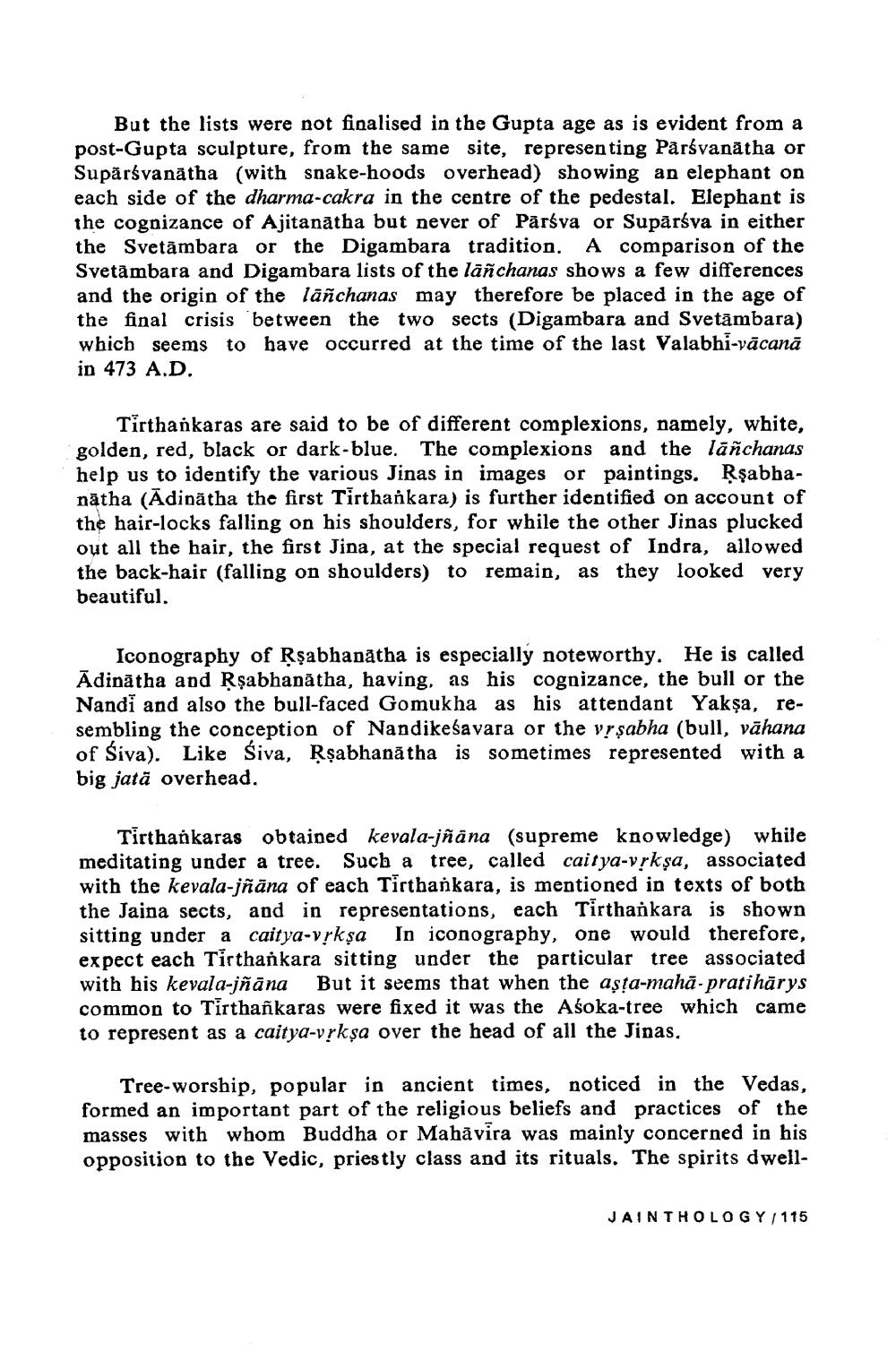________________
But the lists were not finalised in the Gupta age as is evident from a post-Gupta sculpture, from the same site, representing Pårsvanatha or Supărávanātha (with snake-hoods overhead) showing an elephant on each side of the dharma-cakra in the centre of the pedestal. Elephant is the cognizance of Ajitanatha but never of Pārsva or Supārsva in either the Svetāmbara or the Digambara tradition. A comparison of the Svetāmbara and Digambara lists of the lāñchanas shows a few differences and the origin of the lāñchanas may therefore be placed in the age of the final crisis between the two sects (Digambara and Svetāmbara) which seems to have occurred at the time of the last Valabhi-vācanā in 473 A.D.
Tirthankaras are said to be of different complexions, namely, white, golden, red, black or dark-blue. The complexions and the lāñchanas help us to identify the various Jinas in images or paintings. Rşabbanātha (Ādinātha the first Tirthankara) is further identified on account of the hair-locks falling on his shoulders, for while the other Jinas plucked out all the hair, the first Jina, at the special request of Indra, allowed the back-hair (falling on shoulders) to remain, as they looked very beautiful.
Iconography of Rşabhanātha is especially noteworthy. He is called Ādinātha and Rşabhanátha, having, as his cognizance, the bull or the Nandi and also the bull-faced Gomukha as his attendant Yakşa, resembling the conception of Nandikeśavara or the vrşabha (bull, vāhana of Siva). Like Siva, Rşabhanātha is sometimes represented with a big jatā overhead.
Tirthankaras obtained kevala-jñāna (supreme knowledge) while meditating under a tree. Such a tree, called caitya-vrkşa, associated with the kevala-jñāna of each Tirthankara, is mentioned in texts of both the Jaina sects, and in representations, each Tirthankara is shown sitting under a caitya-vrksa In iconography, one would therefore, expect each Tirthankara sitting under the particular tree associated with his kevala-jñāna But it seems that when the aşta-mahā-pratihārys common to Tirthañkaras were fixed it was the Asoka-tree which came to represent as a caitya-vrksa over the head of all the Jinas.
Tree-worship, popular in ancient times, noticed in the Vedas, formed an important part of the religious beliefs and practices of the masses with whom Buddha or Mahăvira was mainly concerned in his opposition to the Vedic, priestly class and its rituals. The spirits dwell
JAINTHOLOGY/ 115




